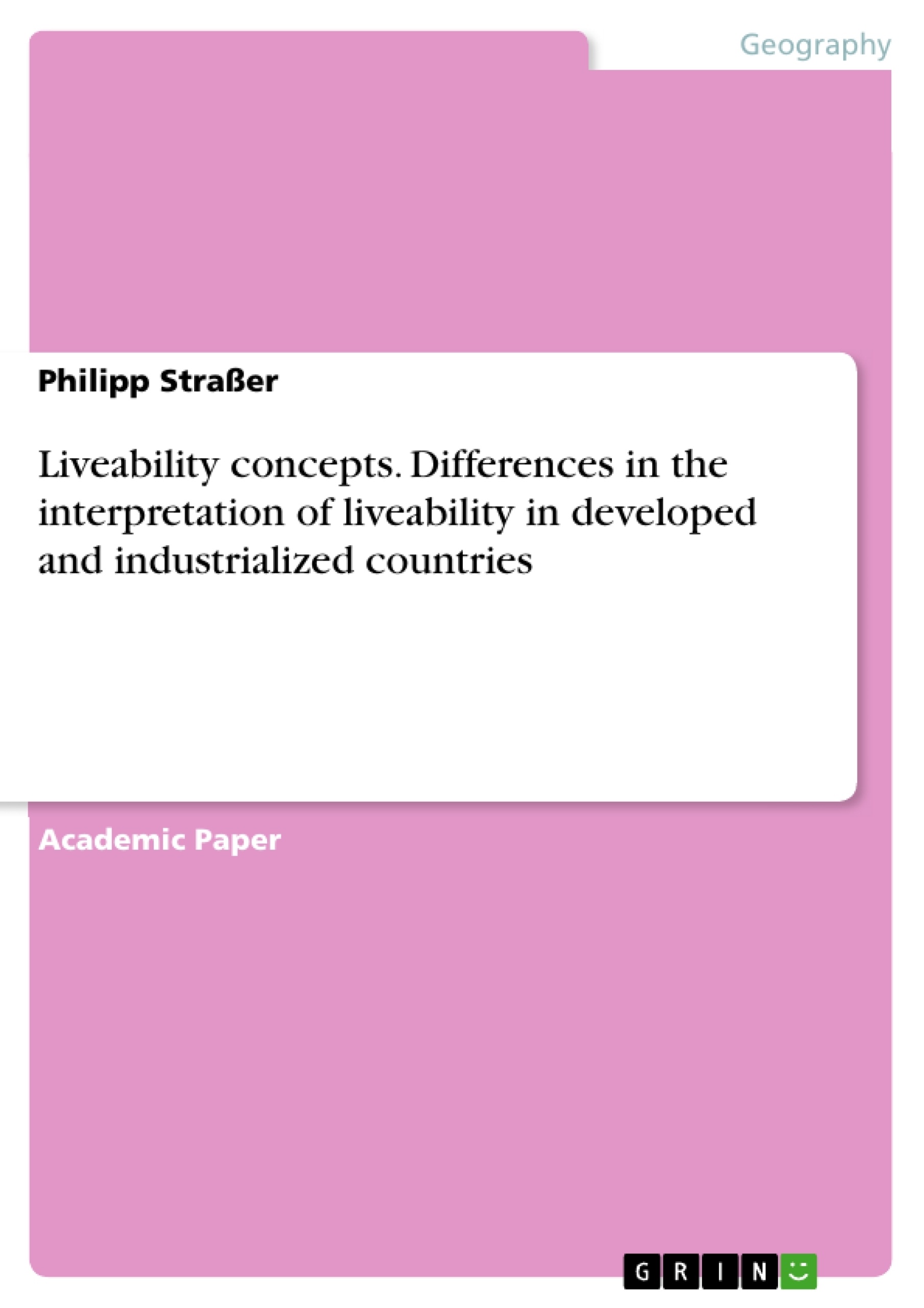This work aims to compare the indicators of the western liveability concept to concepts from developing countries. In this case at least one liveability study from each continent (Latin America, Asia and Africa) that is underrepresented in these classical liveability rankings was chosen.
Liveability is a widely used and popular term nowadays, but it is hard to quantify and compare liveability. The most used and prominent attempts to compare liveability on a worldwide scale are the liveability list. These annual rankings sort big cities according to the score in certain parameters that are weighted and then summed together. Usually cities from the industrialized countries are found at the top of these lists whereas cities of developing countries form the bottom. Maybe there are different concepts of liveability in different parts of the world and these rankings are only the western view on liveability.
Table of contents
1 Abstract
2 Introduction
3 Liveability Rankings
3.1 CRITERIA OF LIVEABILITY RANKINGS
3.2 LIVEABILITY RANKING OF
3.3 CRITICISM ON LIVEABILITY LISTS
4 Liveability in developing countries
4.1 BHUTAN AND THE GROSS NATIONAL HAPPINESS
4.2 LIVEABILITY AS A CONCEPT IN INDIA
4.3 LIVEABILITY- AN AFRICAN PERSPECTIVE
4.4 LIVEABILITY IN LATIN AMERICA ON THE EXAMPLE OF NICARAGUA
4.5 COMPARISON OF LIVEABILITY BETWEEN TEHRAN AND TARTU
5 Conclusion
6 References
7 Table of Figures
- Quote paper
- Philipp Straßer (Author), 2019, Liveability concepts. Differences in the interpretation of liveability in developed and industrialized countries, Munich, GRIN Verlag, https://www.grin.com/document/584716
-

-

-

-
Upload your own papers! Earn money and win an iPhone X. -

-
Upload your own papers! Earn money and win an iPhone X. -

-
Upload your own papers! Earn money and win an iPhone X. -

-
Upload your own papers! Earn money and win an iPhone X. -

-
Upload your own papers! Earn money and win an iPhone X. -

-
Upload your own papers! Earn money and win an iPhone X. -

-
Upload your own papers! Earn money and win an iPhone X.

